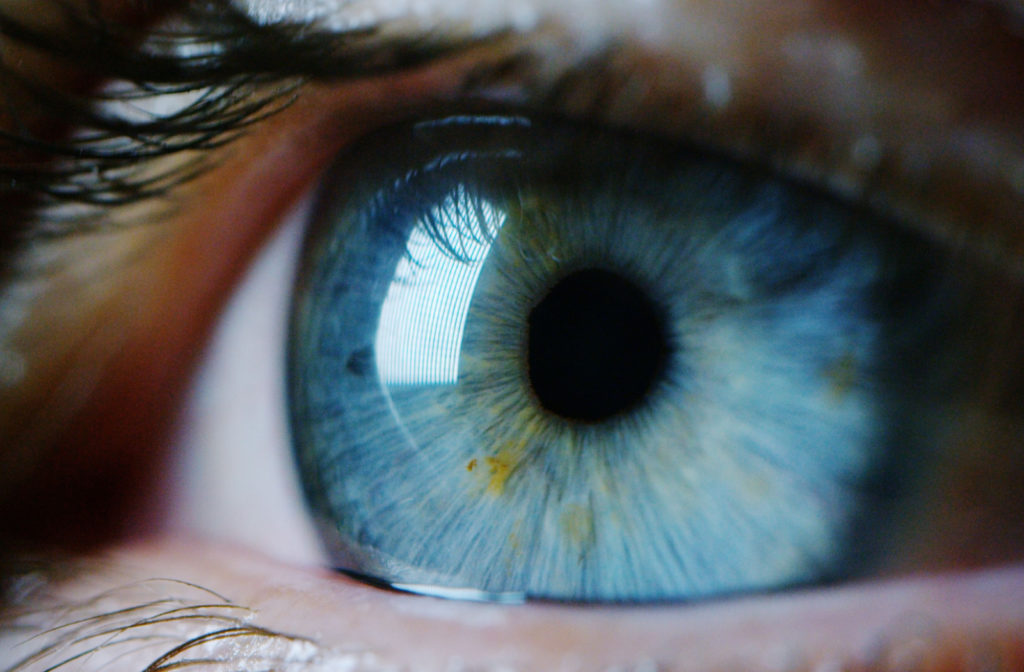Any new flashes, floaters, waves, or other shapes and shades in your vision can indicate an eye emergency and should be addressed with an eye exam.
Any situation that poses a serious risk to your vision or ocular health is considered an eye emergency.
What if you’re seeing waves in your vision? “Waves” refers to seeing bright wavy lines fluctuating in your vision, which can result from an ocular migraine. However, seeing waves in your vision can be a couple of different things.
What Causes Waves in Vision?
Seeing lights that flash and wave in your vision isn’t always a serious issue. However, repeated flashes, streaks, or stars in your eyes might be a sign of a significant health concern. A quick visit to your eye doctor can help prevent permanent loss of vision.
Changes in the vitreous fluid—the gel that gives the eye its shape—are usually responsible for flashes in the eye. These changes can be due to aging, excessive nearsightedness, or past eye surgery.
The vitreous can separate from the retina as it changes in consistency, known as posterior vitreous detachment. However, complications may ensue if the gel remains adhered to the retina during this process.
Ocular Migraine
Ocular migraine is a migraine occurrence that includes visual symptoms. It’s known as retinal migraine if it affects just one eye. If it occurs in both eyes, doctors refer to it as a migraine with aura. It’s unclear what causes ocular migraines, but they could be related to stimulated synapses in your brain.
Symptoms of Ocular Migraine
Migraines are a neurological disorder that cause severe head pain and other symptoms such as:
- Vomiting and nausea
- Difficulty speaking
- Sensitivity to light and sound
Migraines affect approximately 12% of the population. Around 30% of people who have migraine episodes suffer from ocular migraines.
Causes & Treatment for Ocular Migraine
The cause of ocular migraines is not entirely understood. But certain triggers, such as powerful lighting, stress, and genetics, may contribute.
You might experience flashing or shimmering lights, zigzagging or waving lines, or stars during an ocular migraine experience. It can also produce blind patches in your vision.
Treatment for ocular migraines is usually unnecessary if they occur infrequently.
Keratoconus
Wavy lines can also be a symptom of keratoconus.
Keratoconus develops when your cornea thins and begins to bulge out, forming a cone that impairs vision and makes detailed activities difficult.
You need a spherical cornea to see clearly. When the cornea is irregularly shaped, light entering the eye can’t be focused properly, leading to impaired vision.
Causes & Symptoms of Keratoconus
Medical professionals don’t know what causes keratoconus, making prevention difficult. However, there’s some evidence that it is inherited, with around 10% of patients having a parent with keratoconus. Rubbing your eyes could also speed up the progression of keratoconus because it can damage the already thin cornea.
Other signs of keratoconus include:
- Light sensitivity
- Glares
- Swelling or redness
- Worsening nearsightedness or astigmatism
- Increasing discomfort with contact lenses
Keratoconus Treatment
Keratoconus treatment depends on your symptoms. Minor keratoconus can be corrected with glasses, but you may eventually need to wear specialty contact lenses to help with focusing.
Retinal Tears & Retinal Detachment
A torn retina is an alarming condition that causes impaired vision. It occurs when the retina has a tear or hole, similar to a rip in fabric. A torn retina can progress to a more dangerous condition called a detached retina, which can occur when the retina is ripped away from the rear of the eye. A torn retina must be treated immediately to prevent additional complications.
The vitreous begins to decrease and thin as we age. It usually moves around on the retina without causing much trouble, but it could adhere to the retina and tug with such force that it tears the retina. When this happens, fluid can enter the tear and cause the retina to detach.
A retinal tear can cause bright flashes and floaters. Occasionally, blood can leak into the vitreous through a retinal tear. This is referred to as a vitreous hemorrhage, which can cause many floaters.
Fluid can also flow through the hole and cause the retina to detach. This dangerous condition must be addressed immediately, or you may lose your vision.
Retinal Tear Treatment
A retina tear can be treated in 2 ways:
- Photocoagulation: A laser fuses the retina to the eye wall. Typically, this process takes less than 15 minutes. To focus the laser, an ophthalmologist places a lens in front of your eye. They then use the laser to produce scars by making tiny burns. Scars adhere the retina to the eye’s wall.
- Cryopexy: This treatment involves extreme temperatures to seal the retina to the eye wall and typically takes less than 30 minutes. The surgeon uses a probe to administer extreme cold energy to the retina, causing the retina around the tear to freeze and scarring to form. These scars adhere the retina to the eye wall.

Causes of Eye Emergencies
There are many causes for eye emergencies, the most common being:
- Head or face injuries
- Allergic responses
- Chemicals in the eyes
- Foreign items in the eyes, including abrasions and punctures
- Stress
When to See Your Eye Doctor
It’s impossible to distinguish what is causing waves or flashes in your vision without a comprehensive eye exam. If you’re not sure if you have an eye emergency, assume you do and get immediate care rather than risking harm to your eyes.
At Total Vision Tierrasanta, we offer emergency eye exams. Book an appointment with us right away and get the care you need.


